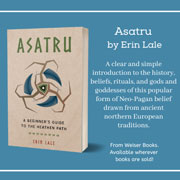
I consider shamanic practice to be the purest spirituality as it is ubiquitous throughout world cultures, is rooted in nature, and is not part of any structured dogma or organized religion. The purpose of religion is to control the human spirit. The purpose of shamanism is to free it.
Shamanism has no ruling deities, no rulers or central figures of any kind, no creed, no dogma. This puts the practice, the power, the responsibility, all in the hands of the individual practitioner. Shamanism allows us to find our true and natural power within ourselves. It does not bid us prostrate ourselves before invented figureheads. Shamanism empowers the individual, and this is one of the main reasons why many would seek to malign and even eradicate it.
This has been the agenda that the church/state and organized religion has historically had against various pagan, animistic and shamanic practices. The pagan shaman has no need of confession, atonement, redemption, sacrament, baptism, repentance, forgiveness, nothing. This undermines the powers that be. The shamanic practitioner becomes the power that is.
Even Buddhism, much admired and emulated in the west, is not untainted by such socio-political agendas, having a long history of suppressing shamanism. This is a history that most Americans and other westerners are probably not familiar with, and one that I was surprised and saddened to discover.
Buddhism first arrived in Mongolia in the 13th century, primarily through Tibetan Buddhist missionaries. Over time, Buddhism became deeply integrated into Mongolian society, influencing various aspects of culture, politics, and spirituality.
Shamanism, on the other hand, had been the indigenous spiritual tradition of the Mongolian people for centuries prior to the arrival of Buddhism.
Initially, Buddhism and shamanism coexisted in Mongolia, often with elements of syncretism where practices from both traditions were incorporated into local belief systems. However, as Buddhism gained more institutional power and support from Mongolian rulers, tensions began to rise between the two belief systems.
From the 16th century onward, there were concerted efforts by Mongolian rulers, often with support from Tibetan Buddhist authorities, to suppress shamanism and promote Buddhism as the dominant religion. This was driven by various factors, including political consolidation, the desire for religious uniformity, and the perceived threat that shamanism posed to Buddhist authority.
At times, these efforts to suppress shamanism resulted in violent conflicts between Buddhist and shamanic practitioners. Temples and sacred sites associated with shamanism were sometimes destroyed, and shamans themselves were persecuted or forced to convert to Buddhism, or murdered.
Despite these efforts, shamanism survived in Mongolia and has even experienced a revival since the decline of communist influence. Shamanism itself has been flourishing around the world in the past thirty years.
Michael Harner created a “core shamanism”; a modern approach to shamanic practice that seeks to distill the essence of shamanic techniques from various indigenous cultures around the world into a cohesive and accessible system. Key features include universal techniques, shamanic journeying, power animals and spirit guides, healing and divination, and ecological awareness.
This system is the birthright of every human and no one race or culture holds a monopoly on it. We all have shamanic traditions in our ancestry, all of us, be it the Arctic shamanism of the Saami or the Amazonian shamanism of the Shipibo-Conibo. Therefore we can all benefit from returning to our shamanic roots.
Shamanic resurgence in the face of historical suppression underscores its enduring relevance and universal appeal, its essence transcends cultural boundaries, offering a pathway for all individuals to reclaim their inherent spiritual heritage. In embracing shamanic practice, we rediscover not only our own power but also our interconnection with all beings and the Earth itself—a timeless wisdom accessible to all who seek it, regardless of race, culture, or creed.




















